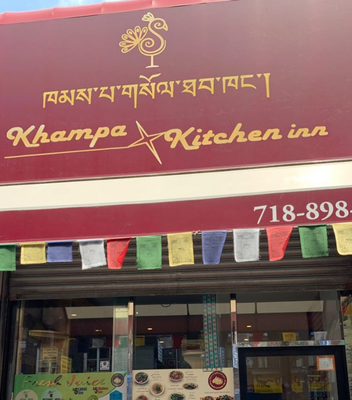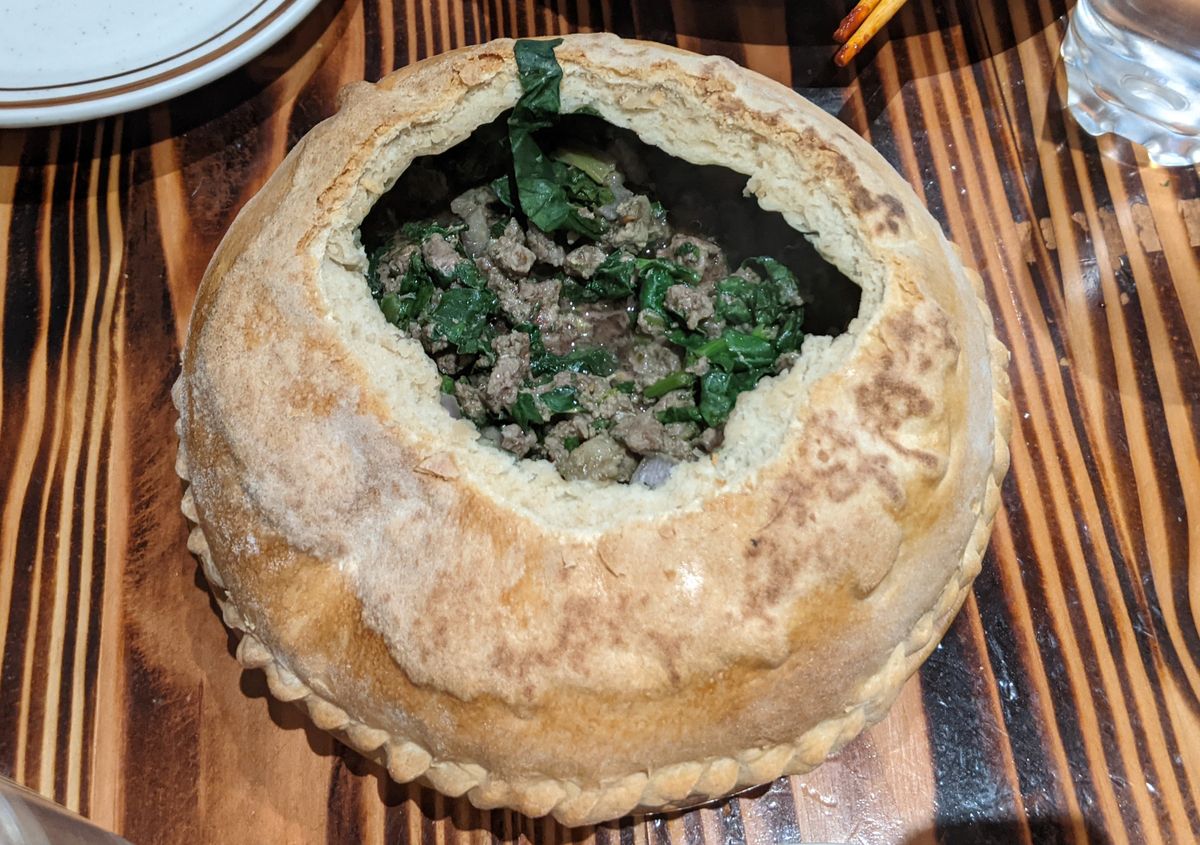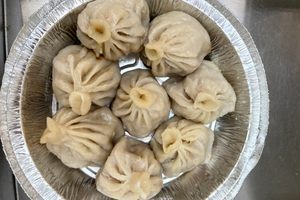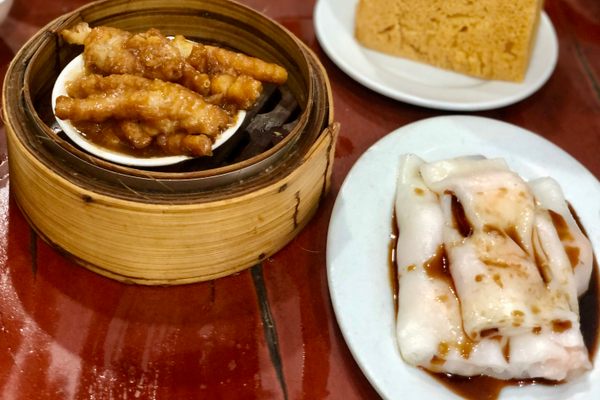About
In the Kham region of Tibet, located between the Himalayas and China's Sichuan Province, poethek-making is a family affair. “You can’t find Poethek anywhere except your home. And when the family gets together, you make it and share and talk and sing," Thupten Bachan told the New York Times. Bachan, along with chef Tashi Dechen, is one of the proprietors of Khampa Kitchen, in Queens, one of the only restaurants serving food from the Kham region in the United States. While he can no longer join his relatives in Tibet for regular poethek-making, he and Dechen recreate the meat-stuffed pastry for guests at their flavorful nook located in Jackson Heights.
To enter the restaurant, you must first walk through a jewelry store, filled with silver, bright-red, and blue stone-strung necklaces. While the jewelry is lovely, the food is the real attraction. Besides poethek, Khampa offers dishes such as paoze—a fluffy dumpling stuffed with beef, pork, or chicken—and Lhasa noodle soup, whose spicy, meaty broth is the perfect antidote to the New York winter (and a perfect way to clear out your pores in the humid, smoggy New York summer). These dishes may seem familiar to those acquainted with the momo dumplings and thukpa noodle soup offered by other Tibetan restaurants, but flavors from nearby Sichuan, evident in dishes such as twice-fried chili-and-peppercorn-flavored ribs add a distinct regional flare. Poethek, a visitor favorite, is also unique to the region.
The secret ingredient to Bachan and Dechen's success is their strong connection to their homeland, both emotionally and culinarily. Bachan uses herbs that his family in Tibet forages, dries, and sends to the United States. The simple, clean, but impactful flavors of chives, parsley, and coriander color their food, whether sprinkled on top of a simple bowl of rice porridge or included in a meat filling. While some flavors are replaced—here, beef and cow's milk butter stand in for the yak meat and butter that you'd traditionally find in Himalayan communities—the fragrant steam from a freshly opened poethek forms a sensory and cultural connection from Jackson Heights all the way to the mountains of Kham.
Related Tags
Published
December 19, 2019










































